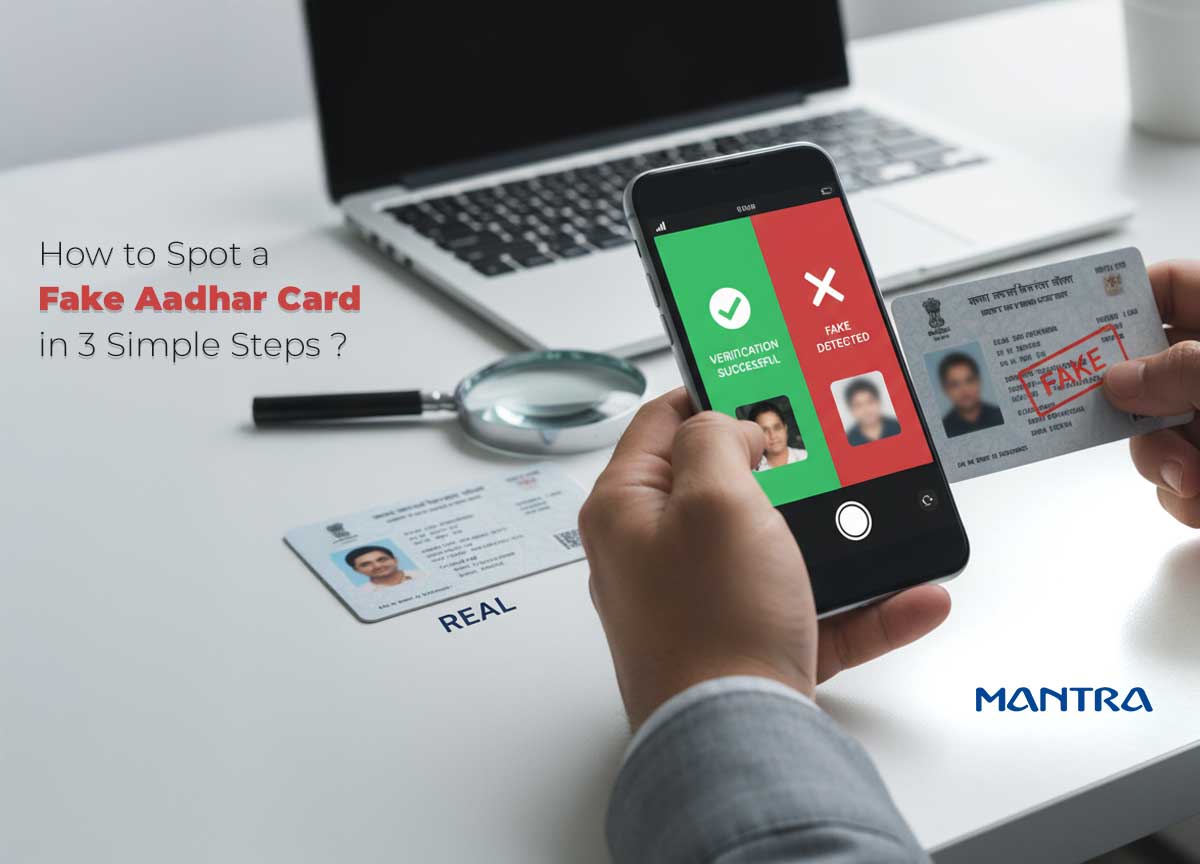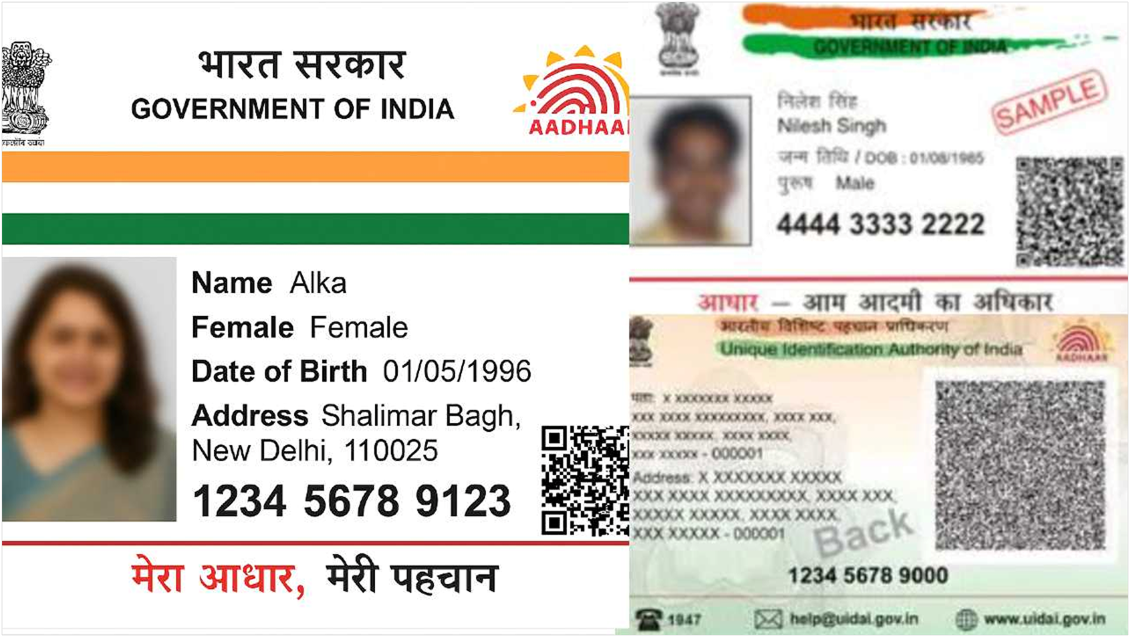
Introduction
As digital transactions become standard across India, Aadhar is the most critical proof of identity. This has made fraudulent Aadhar cards a key tool for criminals. According to reports from the Reserve Bank of India (RBI), frauds related to digital payments and cards have surged with financial fraud losses in India skyrocketing by a staggering 206% in 2024 alone, highlighting the growing risk of identity-based scams.
These sophisticated fake cards can be used to illegally obtain SIM cards, open bank accounts, or even implicate innocent individuals in financial crimes. In response, the Unique Identification Authority of India (UIDAI) has embedded numerous security features into every card. Knowing how to verify them is an essential skill to protect your financial and personal security.
In one recent case, an 86-year-old woman lost over ₹20 crore to such a scheme. This exact method led a senior citizen in Pune to lose over ₹1 crore and a 73-year-old lawyer in Noida lost over ₹3 Crore, demonstrating how a compromised identity document can become a weapon for extortion.
This guide provides a simple, three-step process based on official UIDAI methods to help you confidently determine if an Aadhar card is genuine.
The 3-Step Aadhar Verification Process
Scammers are now using advanced technology like Artificial Intelligence (AI) to create fake aadhar cards that look surprisingly real. These AI tools can copy the design and details of a real Aadhar card, making it harder to spot fakes.
Even with advanced printing technology, fakes almost always fail one of these three tests.
Step 1: QR Code Scan
This is the fastest and most reliable method. Every genuine Aadhar card (physical card, e-Aadhar, or PVC version) has a secure, digitally signed QR code.
Download the mAadhar app or Aadhar QR Scanner app from the Google Play Store or Apple App Store.
Open the app and select the QR code scanner feature.
Point your phone's camera at the QR code on the Aadhar card.
Upon scanning, the app displays the holder's demographic details (name, address, date of birth, gender) and photograph. This data is digitally signed by UIDAI, confirming its authenticity. The displayed information on the app screen perfectly matches the information printed on the card.
However, when the app scans the code, and the demographic data or photo that appears on the screen does not match what is physically printed on the card, it is considered as a major red flag for identity cloning, where a real QR code is used with a fake photograph. The app may show a "signature validation failed" error, indicating the digital certificate is not from UIDAI.
Step 2: The Physical Inspection
If you can't scan the card, use your eyes and hands. Look for these official security features that are very difficult to replicate.
Ghost Image:
Look for a smaller, secondary photo of the cardholder located on the right side of the card. This "ghost image" should be faint and clear.
Hologram:
On newer PVC cards, a hologram is present, which is not easily photocopied or printed by standard means.
Guilloché Pattern:
The front of the card features a fine, intricate, multi-colored pattern in the background. On fakes, this pattern often appears blurry, smudged, or is missing entirely.
Tactile Features (PVC Cards):
Some newer cards have raised (tactile) text for the Aadhar number or issue date, which you can feel with your finger.
Printing and Material Quality:
A genuine card has high-quality, sharp printing. Fakes often have blurry text, spelling errors (e.g., in "Government of India"), or incorrect logos. The card material should feel sturdy, not like a cheap, laminated piece of paper.
Step 3: Official UIDAI Website
This method verifies if the Aadhar number itself is valid in the UIDAI database.
Visit the official My Aadhar portal: https://myaadhar.uidai.gov.in
Navigate to the "Verify an Aadhar Number" service.
Enter the 12-digit Aadhar number and the security captcha.
Click "Proceed to Verify."
If the number is valid, the website will display a confirmation message showing details like the holder's age band, gender, and state. If the portal shows that the Aadhar number does not exist, the card is unequivocally fake, even if it looks perfect.

An example of a fake Aadhar (left) compared to official UIDAI samples (right) illustrates common forgery errors.
Aadhar Verification Checklist
| Feature | Genuine Aadhar Card | Signs of a Fake |
|---|---|---|
| Ghost Image | A smaller, slightly transparent "ghost image" of the main photograph is clearly visible on the right side of the card. On newer PVC cards, this feature is well-integrated. When held against the light, it should be distinct. | The ghost image is completely missing. It may also be blurry, too dark, or look like a low-quality copy of the main photo rather than a translucent, secondary image. |
| Guilloché Pattern | The background of the card contains a fine, intricate, and multi-colored interlocking line pattern, similar to what is found on banknotes. This pattern is difficult for standard printers to replicate perfectly and should appear sharp and continuous. | The background is a plain solid color, or the pattern is smudged, pixelated, or has visible printing breaks. Forgers often struggle to reproduce the complexity of this security feature. |
| Hologram | On the official Aadhar PVC card, there is a hologram that reflects light and shows depth. It is a key security element designed to be tamper-proof and difficult to photocopy. | The card has no hologram at all. Alternatively, it may have a dull, flat sticker that does not have the reflective, three-dimensional properties of a real hologram. This is a common sign of a cheap forgery. |
| Microtext | The card contains text that is too small to be read with the naked eye and requires a magnifying glass. This microtext is typically located around the ghost image or other specific areas and should be sharp and legible under magnification. | The microtext is either absent, unreadable even with a magnifying glass, or appears as a smudged line. Counterfeit printing technology often cannot reproduce text at such a small scale with clarity. |
| Text, Logos & Quality | The printing is of high quality, with sharp, clear fonts and no spelling errors. The "Government of India" and Aadhar logos are correctly proportioned, colored, and not pixelated. The physical card (especially the PVC version) has a standardized thickness and feel, with clean, smooth edges. Paper versions use specific stock and lamination. | You can spot obvious typos or spelling mistakes in the holder's details or in official text. Fonts may be inconsistent, improperly spaced, or misaligned. Logos may appear stretched, blurry, or have incorrect colors. The material feels flimsy, the lamination is uneven, or the ink smudges easily. |
| Photograph | The primary photograph is clear, well-cropped, and looks naturally integrated into the card. It should be a high-resolution image that clearly matches the person presenting the card. | The photograph appears pasted on, pixelated, poorly cropped, or has unnatural-looking edges. The photo on the card might not match the person, or more subtly, it might not match the photo that appears after scanning the QR code. |
| Issue & Print Date | A genuine card, particularly the PVC version, will have both an "Issue Date" and a "Print Date" clearly mentioned. | These dates may be missing, formatted incorrectly, or seem illogical (e.g., a print date that is years before the issue date). |
What to Do If You Suspect a Fake Aadhar
Cybercriminals often operate out of unauthorized centers or pose as legitimate agents, known to capture fingerprints on silicon pads or other materials to perform fraudulent transactions through the Aadhar Enabled Payment System (AePS), siphoning money from victims' bank accounts, obtain loans, or apply for SIM cards in your name, potentially implicating you in criminal activities.
If you conclude a card is fake:
Do not accept it as a valid proof of identity for any transaction (rent, employment, etc.). Politely refuse and request an alternative ID.
Report it. You can report suspected fraud to UIDAI via its toll-free helpline 1947 or by emailing help@uidai.gov.in.
If you believe it's connected to criminal activity, report it to the National Cyber Crime Reporting Portal or your local police.
How to Protect Your Real Aadhar From Fraud and Misuse?
While spotting a fake aadhar card is a critical skill, an even greater threat lies in the misuse of your legitimate biometric data which is your fingerprints, iris scans, and photograph.

Use Masked Aadhar
Whenever you share a copy, use the "Masked Aadhar" option from the UIDAI website. It blacks out the first 8 digits, showing only the last 4.

Lock Your Biometrics
Use the mAadhar app or UIDAI website to lock your biometrics when you are not actively using them for authentication. This prevents anyone from using your fingerprint or iris for transactions.

Insist on Official Centers
For any Aadhar-related service, only visit official Aadhar Seva Kendras (ASKs), or designated centers at banks and post offices. Avoid unofficial roadside shops or cyber cafes. Official centers are required to use secure, certified biometric devices that encrypt your data, ensuring it cannot be cloned or stolen.

Use VID
To make your Aadhar even more secure, you can use a Virtual ID (VID). A VID is a temporary, 16-digit number that is linked to your Aadhar number. You can use your VID for online verification (e-KYC) without ever showing your actual 12-digit Aadhar number. Only you can generate a VID, which you will receive via SMS on your registered mobile number. No one can figure out your Aadhar number from your VID.
Final Thoughts
The surge in fake aadhar cards is fueling a wider epidemic of cybercrime, The methods of deception have evolved far beyond simple forgeries. Criminals now employ sophisticated scams such as "digital arrest," where they pose as police officials, falsely claim a person's Aadhar has been misused, and coerce victims into transferring vast sums of money. With digital transactions and identity verification becoming central to modern life in India, the authenticity of your Aadhar card has never been more critical. Detecting a fake aadhar card is a straightforward process when you use the official tools provided by UIDAI.
Comments